Infection
- Page Path
-
- HOME
- TOPICS
- Infection
- Topics
-
- Adolescence Medicine (3)
- Allergy (52)
- Cardiology (76)
- Critical Care Medicine (8)
- Developmental and Behavioral Medicine (17)
- Emergency Medicine (5)
- Endocrinology (51)
- Gastroenterology (57)
- General Pediatrics (37)
- Genetics and Metabolism (20)
- Hematology (11)
- Immunology (12)
- Infection (66)
- Neonatology (Perinatology) (103)
- Nephrology (Genitourinary) (49)
- Neurology (88)
- Nutrition (25)
- Oncology (15)
- Neurobehavior (11)
- Pulmonology (25)
- Rheumatology (2)
- Other (28)
- Original Article
- Infection
- Prevalence of methicillin-resistant Staphylococcus aureus in Iranian children: a systematic review and meta-analysis
- Farhad Sarrafzadeh, Seyed Mojtaba Sohrevardi, Hamid Abousaidi, Hossein Mirzaei
- Clin Exp Pediatr. 2021;64(8):415-421. Published online November 20, 2020
-
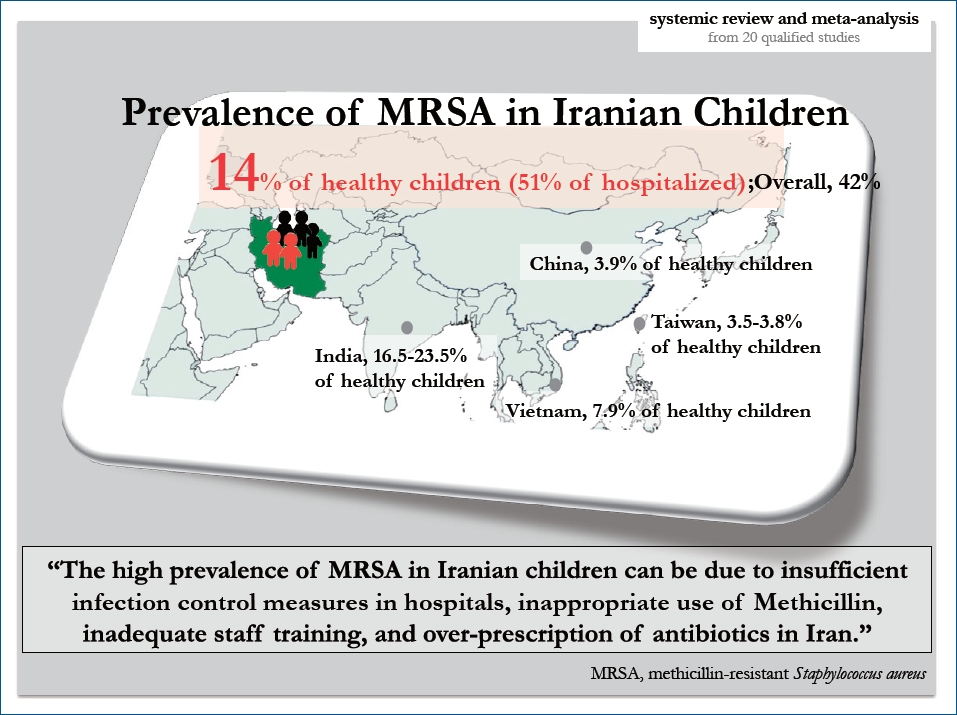
The pooled prevalence of methicillin-resistant Staphylococcus aureus (MRSA) was 42% among culture-positive cases of S. aureus, 51% in hospitalized children, and 14% in healthy children. The high prevalence of MRSA in Iranian children may be due to insufficient infection control measures in hospitals, inappropriate use of methicillin, inadequate staff training, and over-prescription of antibiotics in Iran.
- Review Article
- Infection
- Updates on the coronavirus disease 2019 vaccine and consideration in children
- Hyun Mi Kang, Eun Hwa Choi, Yae-Jean Kim
- Clin Exp Pediatr. 2021;64(7):328-338. Published online June 21, 2021
-
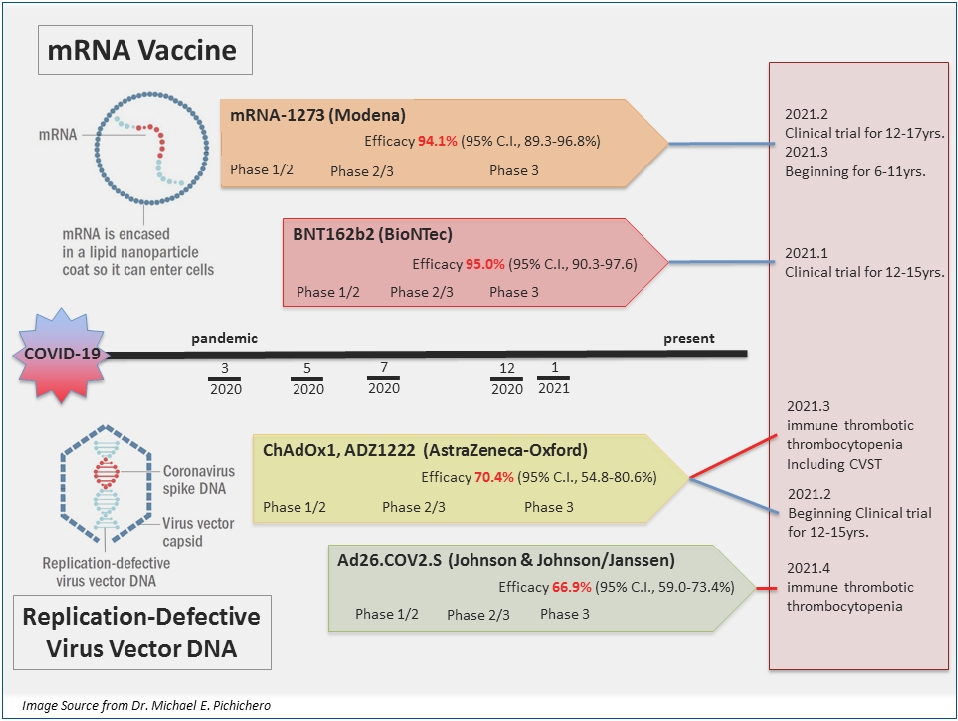
· The number of coronavirus disease 2019 cases has exponentially increased worldwide, and children ≤19 years old account for 11.0% of all confirmed cases.
· mRNA vaccines, BNT162b2 and mRNA-1273, and adenoviral vector vaccines, AZD1222 and Ad26.COV2.S, authorized for emergency use in the Emergency Use Listing of the World Health Organization are reviewed.
· Clinical trials of these vaccines have shown that they are safe and serious adverse reactions are rarely observed.
- School closures during the coronavirus disease 2019 outbreak
- Eun Young Cho, Young June Choe
- Clin Exp Pediatr. 2021;64(7):322-327. Published online May 31, 2021
-
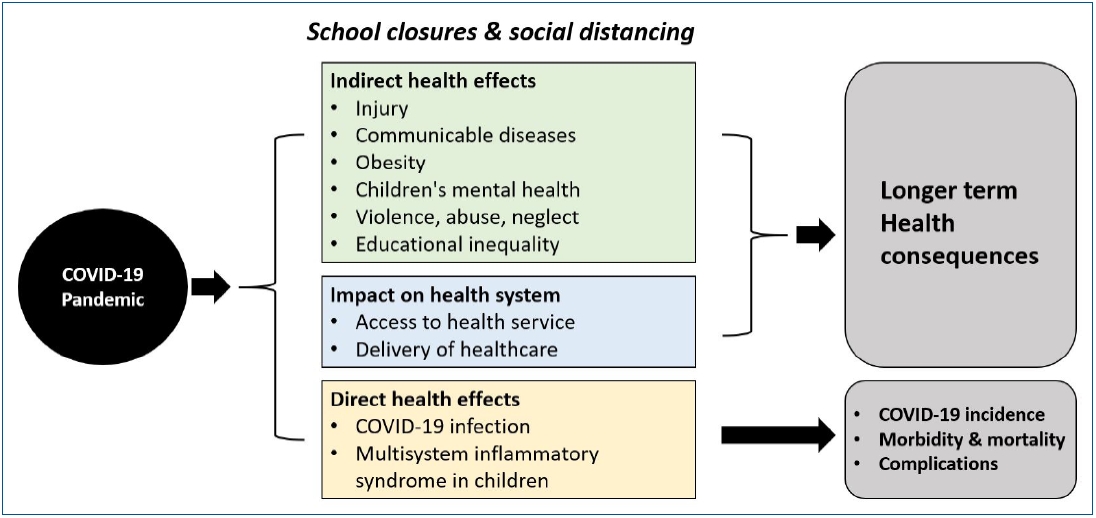
· Earlier modeling studies of the effects of school closures on severe acute respiratory syndrome coronavirus 2 were largely derived from the pandemic influenza model, resulting in conflicting implications.
· Observational findings suggest no clear effect of school closures on community transmission or overall mortality.
· School closures must be weighed against potential high social costs, which can also negatively affect children’s health.
- Original Article
- Infection
- Febrile urinary tract infection in children: changes in epidemiology, etiology, and antibiotic resistance patterns over a decade
- Woosuck Suh, Bi Na Kim, Hyun Mi Kang, Eun Ae Yang, Jung-Woo Rhim, Kyung-Yil Lee
- Clin Exp Pediatr. 2021;64(6):293-300. Published online October 14, 2020
-
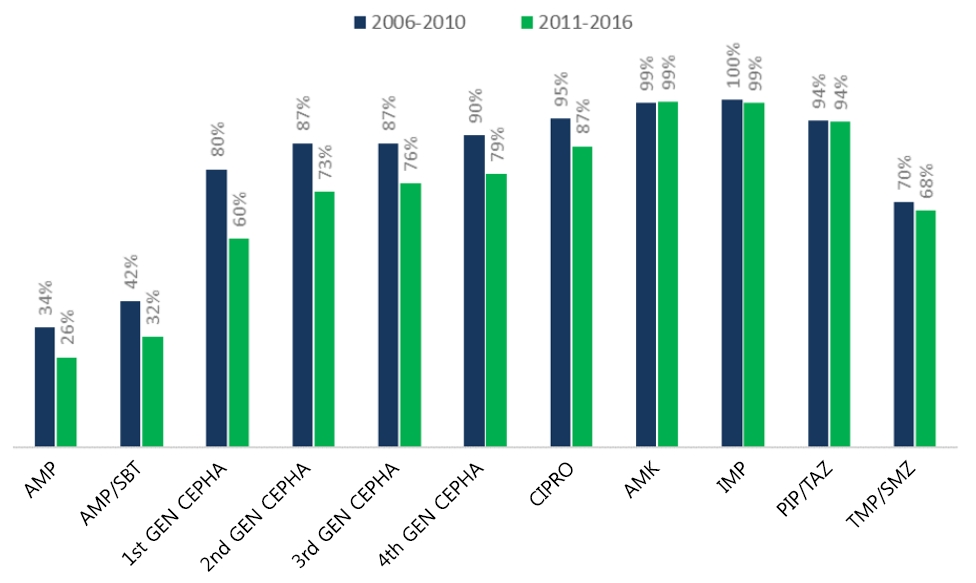
Question: How has the antibiotic susceptibility of urinary pathogens changed and what does it imply?
Finding: A yearly increase in multidrug-resistant and extended-spectrum β-lactamase (ESBL)–producing pathogens was observed. A higher recurrence rate was observed in cases of febrile urinary tract infection caused by ESBL producers in patients with underlying vesicoureteral reflux (VUR).
Meaning: The initial empirical antibiotic should reflect the changing susceptibility patterns and underlying VUR status.
- Editorial
- Infection
- Should we prescribe carbapenem for treating febrile urinary tract infection caused by extended-spectrum β-lactamase-producing Enterobacteriaceae in children with vesicoureteral reflux?
- Ji Young Park
- Clin Exp Pediatr. 2021;64(6):284-285. Published online January 5, 2021
-
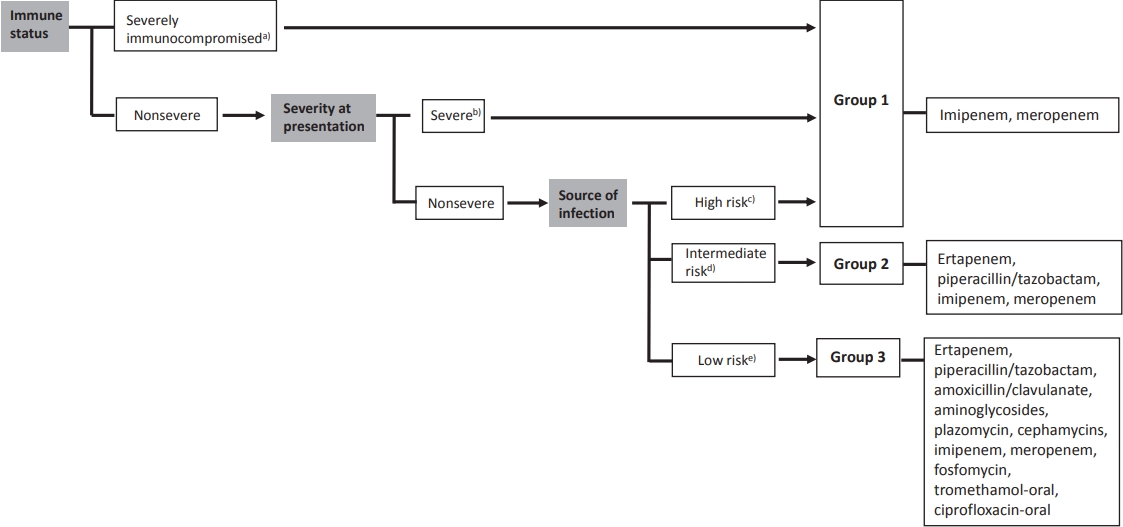
Recent studies are focused on the noninferiority of noncarbapenem therapy for the treatment of extended-spectrum β-lactamases producing Enterobacteriaceae infections to reduce the utilization of carbapenem.
- Babies born to mothers positive for SARS-CoV-2 – Are they in danger?
- Joon Kee Lee
- Clin Exp Pediatr. 2021;64(6):280-281. Published online May 4, 2021
-
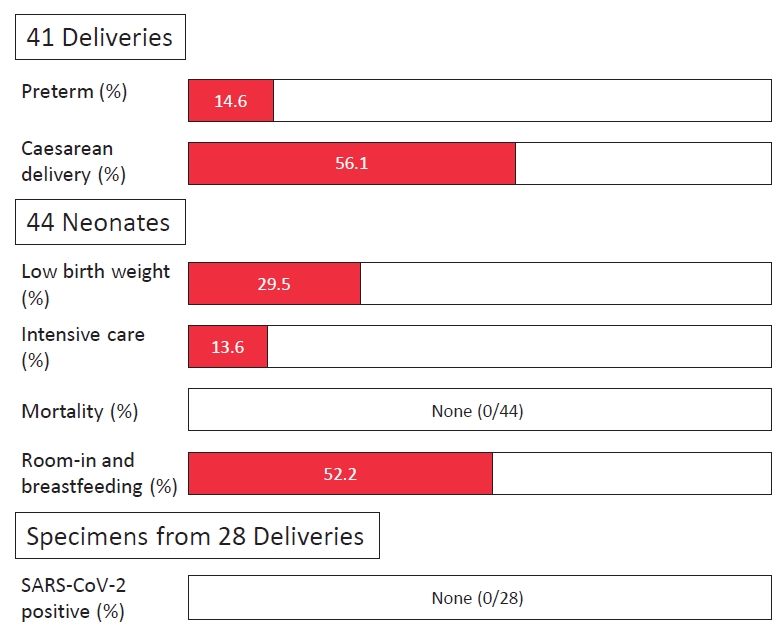
Concerns have arisen in the coronavirus disease 2019 (COVID-19) pandemic upon pregnancy and postnatal care starting from reproductive decision-making. To the utmost knowledge, reproductive decisions should not be based primarily on health-related COVID-19 concerns, as the possibility of vertical transmission is negligible and the perinatal outcome is generally not poor compared to pregnancies without COVID-19, as long as infection control measures are well kept.
- Clinical note
- Infection
- Coronavirus disease 2019 in a 13-year-old patient with acute lymphoblastic leukemia
- Seyed Kamal Eshagh Hossaini, Zahra Movahedi, Ahmad Hormati, Hosein Heydari, Seyed Jalal Eshagh Hosseini, Fatemeh Khodadust, Mahboubeh Afifian, Sajjad Ahmadpour
- Clin Exp Pediatr. 2021;64(5):247-250. Published online March 8, 2021
-

Question: What should be considered in an immunocompromised child with coronavirus disease 2019 (COVID-19)?
Finding: Due to the importance of appropriately managing COVID-19 in children with cancer, the possibility of a fatal outcome should be considered in immunocompromised patients who receive chemotherapy agents.
Meaning: In all kinds of infections including COVID-19, disuse management and the development of international guidelines for children with cancer is challenging but important.
- Editorial
- Infection
- Catheter care bundle and feedback to prevent central line-associated bloodstream infections in pediatric patients
- Hye-Kyung Cho
- Clin Exp Pediatr. 2021;64(3):119-120. Published online December 8, 2020
-
• Intravascular catheter-related infection is an important cause of morbidity and mortality in children, and care bundles are effective and cost-saving in pediatric and neonatal patients.
• Providing regular feedbacks to critical care practitioners is helpful to maintain compliance to care bundle.
• Establishing a bundle policy (insertion and maintenance), monitoring compliance, and providing regular feedbacks are necessary for prevention of central line-associated bloodstream infections in pediatric patients.
- Perspective
- Infection
- Addressing children’s health amid the coronavirus disease 2019 pandemic
- Young June Choe, Bilal Aurang Zeb Durrani, Stefan Swartling Peterson
- Clin Exp Pediatr. 2021;64(2):46-48. Published online December 15, 2020
-

In the coronavirus disease 2019 (COVID-19) pandemic, children experience heightened barriers to health and protective services. Children may also be disproportionately affected due to their reliance on the education system for daily tasks and lack of access to remote learning options. Republic of Korea findings on how vaccination coverage could be sustained in children and schools could be reopened without aggravating COVID-19 underlie the need for coordinated efforts across sectors.
- Clinical note
- Infection
- Coronavirus disease 2019 in a 2-month-old male infant: a case report from Iran
- Hosein Heydari, Seyed Kamal Eshagh Hossaini, Ahmad Hormati, Mahboubeh Afifian, Sajjad Ahmadpour
- Clin Exp Pediatr. 2020;63(12):499-502. Published online September 21, 2020
-
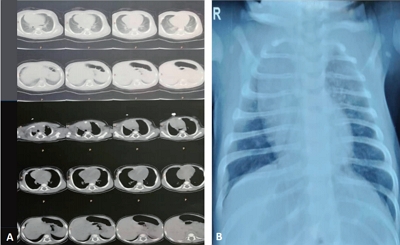
-
DOI: https://doi.org/10.3345/cep.2020.00941 Retraction in: Clin Exp Pediatr 2022;65(8):417
- Review Article
- Infection
- The COVID-19 pandemic: an unprecedented tragedy in the battle against childhood obesity
- Maximilian Andreas Storz
- Clin Exp Pediatr. 2020;63(12):477-482. Published online November 5, 2020
-
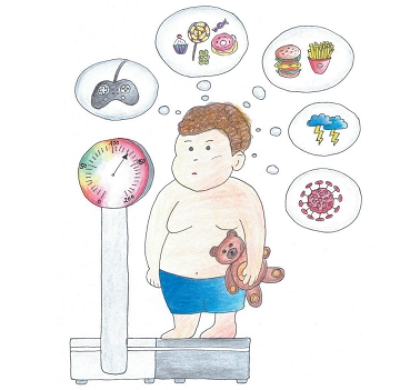
Large-scale quarantine and home confinement during the coronavirus disease 2019 (COVID-19) pandemic will impose new and unfamiliar stressors on children, thereby worsening the childhood obesity epidemic. Physical, nutritional, and psychosocial factors that promote obesity in children during this special situation complementarily contribute to an unprecedented obesogenic environment. Involved stakeholders, including governments, schools, and families, must make all efforts to minimize the impact of the COVID-19 epidemic on childhood obesity.
- Editorial
- Infection
- What are considerations for neonates at risk for COVID-19?
- Soo-Han Choi
- Clin Exp Pediatr. 2020;63(9):359-360. Published online July 17, 2020
-

- Perspective
- Infection
- Can we get a clue for the etiology of Kawasaki disease in the COVID-19 pandemic?
- Jong-Woon Choi
- Clin Exp Pediatr. 2020;63(9):335-336. Published online July 13, 2020
-
A new coronavirus disease 2019 (COVID-19) has been spreading globally since December 2019. Children with a Kawasaki disease (KD)-like illness related with COVID-19 have been reported in Europe and the United States. They presented with symptoms of KD with or without cardiac abnormalities or shock, showing manifestations of hyperactive proinflammatory cytokine reactions like KD. Such cases may provide the opportunity for us to learn more about the etiology and pathogenesis of KD.
- Editorial
- Infection
- Pneumococcal conjugate vaccines: choice of schedule and product development
- Jin Lee
- Clin Exp Pediatr. 2020;63(7):259-260. Published online April 27, 2020
-

- Perspective
- Infection
- COVID-19 in children: reasons for uneventful clinical course
- Sweni Shah, Ramachandran Meenakshisundaram, Subramanian Senthilkumaran, Ponniah Thirumalaikolundusubramanian
- Clin Exp Pediatr. 2020;63(7):237-238. Published online June 18, 2020
-
- Review Article
- Infection
- Epidemiology and clinical features of coronavirus disease 2019 in children
- Soo-Han Choi, Han Wool Kim, Ji-Man Kang, Dong Hyun Kim, Eun Young Cho
- Clin Exp Pediatr. 2020;63(4):125-132. Published online April 6, 2020
-

Coronavirus disease-2019 (COVID-19), which started in Wuhan, China, in December 2019 and declared a worldwide pandemic on March 11, 2020, is a novel infectious disease that causes respiratory illness and death. Pediatric COVID-19 accounts for a small percentage of patients and is often milder than that in adults; however, it can progress to severe disease in some cases. Even neonates...
- Epidemiology, virology, and clinical features of severe acute respiratory syndrome -coronavirus-2 (SARS-CoV-2; Coronavirus Disease-19)
- Su Eun Park
- Clin Exp Pediatr. 2020;63(4):119-124. Published online April 2, 2020
-

A cluster of severe pneumonia of unknown etiology in Wuhan City, Hubei province in China emerged in December 2019. A novel coronavirus named severe acute respiratory syndrome coronavirus-2 (SARS-CoV-2) was isolated from lower respiratory tract sample as the causative agent. The current outbreak of infections with SARS-CoV-2 is termed Coronavirus Disease 2019 (COVID-19) by the World Health Organization (WHO). COVID-19...
- Central line-associated bloodstream infections in neonates
- Hye Jung Cho, Hye-Kyung Cho
- Clin Exp Pediatr. 2019;62(3):79-84. Published online December 19, 2018
-

Newborn infants, including premature infants, are high-risk patients susceptible to various microorganisms. Catheter-related bloodstream infections are the most common type of nosocomial infections in this population. Regular education and training of medical staffs are most important as a preventive strategy for central line-associated bloodstream infections (CLABSIs). Bundle approaches and the use of checklists during the insertion and maintenance of central...
- Case Report
- Infection
- Scabies mimicking graft versus host disease in a hematopoietic cell transplant recipient
- Dongsub Kim, Soo-Han Choi, Dong Youn Lee, Juyoun Kim, Eunjoo Cho, Keon Hee Yoo, Hong Hoe Koo, Yae-Jean Kim
- Clin Exp Pediatr. 2018;61(11):371-373. Published online November 9, 2018
-

Scabies is a highly contagious skin infestation caused by the mite, Sarcoptes scabiei var. hominis. Complex responses to scabies mites in the innate, humoral, and cellular immune systems can cause skin inflammation and pruritus. Diagnosis can be challenging because scabies resembles other common skin conditions. We report the first Korean case of scabies in a hematopoietic cell transplant (HCT) recipient,...
- Original Article
- Infection
- A contact investigation after exposure to a child with disseminated tuberculosis mimicking inflammatory bowel disease
- Dongsub Kim, Sodam Lee, Sang-Hee Kang, Mi-Sun Park, So-Young Yoo, Tae Yeon Jeon, Joon-Sik Choi, Bora Kim, Jong Rim Choi, Sun Young Cho, Doo Ryeon Chung, Yon Ho Choe, Yae-Jean Kim
- Clin Exp Pediatr. 2018;61(11):366-370. Published online November 15, 2018
-
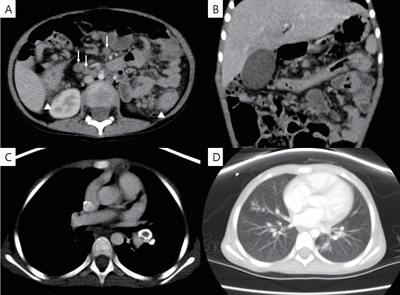
Purpose: Tuberculosis (TB) is one of the most important diseases that cause significant mortality and morbidity in young children. Data on TB transmission from an infected child are limited. Herein, we report a case of disseminated TB in a child and conducted a contact investigation among exposed individuals. Methods: A 4-year-old child without Bacille Calmette-Guérin vaccination was diagnosed as having culture-proven...
- Usefulness of the procalcitonin test in young febrile infants between 1 and 3 months of age
- In Sul Lee, Young Jin Park, Mi Hyeon Jin, Ji Young Park, Hae Jeong Lee, Sung Hoon Kim, Ju Suk Lee, Cheol Hong Kim, Young Don Kim, Jun Hwa Lee
- Clin Exp Pediatr. 2018;61(9):285-290. Published online September 15, 2018
-
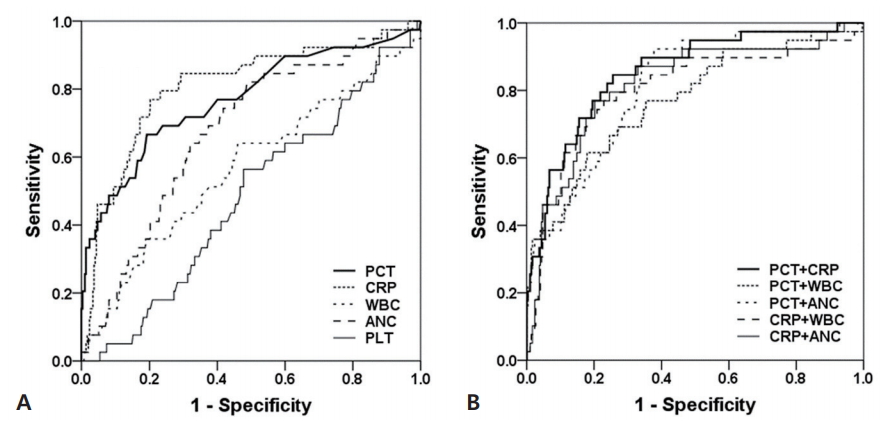
Purpose: To study the usefulness of the procalcitonin (PCT) test in young febrile infants between 1 and 3 months of age. Methods: We evaluated the medical records of 336 febrile infants between 1 and 3 months of age who visited the Emergency Department or outpatient department of Samsung Changwon Hospital from May 2015 to February 2017, and analyzed the clinical characteristics...
- Clinical and laboratory profiles of hospitalized children with acute respiratory virus infection
- Eunjin Choi, Kee-Soo Ha, Dae Jin Song, Jung Hwa Lee, Kwang Chul Lee
- Clin Exp Pediatr. 2018;61(6):180-186. Published online June 25, 2018
-

Purpose Despite the availability of molecular methods, identification of the causative virus in children with acute respiratory infections (ARIs) has proven difficult as the same viruses are often detected in asymptomatic children.
Methods Multiplex reverse transcription polymerase chain reaction assays were performed to detect 15 common respiratory viruses in children under 15 years of age who were hospitalized with ARI between January 2013...
- Association between vitamin D and urinary tract infection in children
- Abolfazl Mahyar, Parviz Ayazi, Sara Safari, Reza Dalirani, Amir Javadi, Shiva Esmaeily
- Clin Exp Pediatr. 2018;61(3):90-94. Published online March 19, 2018
-
Purpose The present study aimed to determine the relationship between serum 25-hydroxyvitamin D (25(OH)D) level and Urinary tract infections (UTIs) in children.
Methods In this case-control study, 70 children with UTI (case group) were compared with 70 healthy children (control group) in terms of serum 25(OH)D levels. The children were between 1 month and 12 years of age. Serum 25(OH)D levels were measured...
- Treatment-failure tularemia in children
- Arzu Karlı, Gülnar Şensoy, Şule Paksu, Muhammet Furkan Korkmaz, Ömer Ertuğrul, Rıfat Karlı
- Clin Exp Pediatr. 2018;61(2):49-52. Published online February 28, 2018
-
Purpose Tularemia is an infection caused by
Francisella tularensis . Its diagnosis and treatment may be difficult in many cases. The aim of this study was to evaluate treatment modalities for pediatric tularemia patients who do not respond to medical treatment.Methods A single-center, retrospective study was performed. A total of 19 children with oropharyngeal tularemia were included.
Results Before diagnosis, the duration of symptoms in...
- Case Report
- Infection
- Acute pancreatitis in hand, foot and mouth disease caused by Coxsackievirus A16: case report
- Byungsung Park, Hyuckjin Kwon, Kwanseop Lee, Minjae Kang
- Clin Exp Pediatr. 2017;60(10):333-336. Published online October 20, 2017
-
Coxsackievirus A16 (CA16), which primarily causes hand, foot, and mouth disease (HFMD), is associated with complications, such as encephalitis, acute flaccid paralysis, myocarditis, pericarditis, and shock. However, no case of pancreatitis associated with CA16 has been reported in children. We report a case of CA16-associated acute pancreatitis in a 3-year-old girl with HFMD. She was admitted because of poor oral...
- Original Article
- Infection
- The impact of an educational intervention on parents' decisions to vaccinate their <60-month-old children against influenza
- Aery Choi, Dong Ho Kim, Yun Kyung Kim, Byung Wook Eun, Dae Sun Jo
- Clin Exp Pediatr. 2017;60(8):254-260. Published online August 14, 2017
-
Purpose Seasonal influenza can be prevented by vaccination. Disease prevention in children aged <60 months is of particular importance because of the associated familial and societal burden. Considering that caretakers make the decision to vaccinate their children, the identification of drivers and barriers to vaccination is essential to increase influenza vaccination coverage.
Methods A total of 639 parents participated in the pre- and...
- Editorial
- Infection
- Additional corticosteroids or alternative antibiotics for the treatment of macrolide-resistant
Mycoplasma pneumoniae pneumonia - Eun-Ae Yang, Kyung-Yil Lee
- Clin Exp Pediatr. 2017;60(8):245-247. Published online August 14, 2017
-
- Original Article
- Infection
- Uropathogenic
Escherichia coli ST131 in urinary tract infections in children - Ki Wook Yun, Mi-Kyung Lee, Wonyong Kim, In Seok Lim
- Clin Exp Pediatr. 2017;60(7):221-226. Published online July 31, 2017
-
Purpose Escherichia coli sequence type (ST) 131, a multidrug-resistant clone causing extraintestinal infections, has rapidly become prevalent worldwide. However, the epidemiological and clinical features of pediatric infections are poorly understood. We aimed to explore the characteristics of ST131Escherichia coli isolated from Korean children with urinary tract infections.Methods We examined 114 uropathogenic
E. coli (UPEC) isolates from children hospitalized at Chung-Ang University...
- Effects of clarithromycin treatment in scrub typhus in children: comparison with chloramphenicol and azithromycin
- Min Lee, June Kim, Dae Sun Jo
- Clin Exp Pediatr. 2017;60(4):124-127. Published online April 25, 2017
-
Purpose Chloramphenicol and tetracycline are not recommended for treating scrub typhus in pediatric patients because of potential side effects, such as aplastic anemia or tooth discoloration. While clarithromycin has recently been used in adults, few reports have been published on its effects in pediatric patients. We report the clinical profiles of pediatric scrub typhus and the effects of clarithromycin on scrub...
- Etiology and clinical characteristics of fever of unknown origin in children: a 15-year experience in a single center
- Yi-Seul Kim, Kyung-Ran Kim, Ji-Man Kang, Jong-Min Kim, Yae-Jean Kim
- Clin Exp Pediatr. 2017;60(3):77-85. Published online March 27, 2017
-

Purpose Fever is one of the most common symptoms in children. In previous studies, infectious disease was the most common cause of pediatric fever of unknown origin (FUO). The aim of this study is to investigate the etiology, clinical characteristics and prognosis of pediatric FUO in 21 century with more diagnostics available and to analyze the factors for certain disease categories.
Methods Among...
-

-
-

-

-
Impact Factor4.2
-
6.52022CiteScore92nd percentilePowered by







